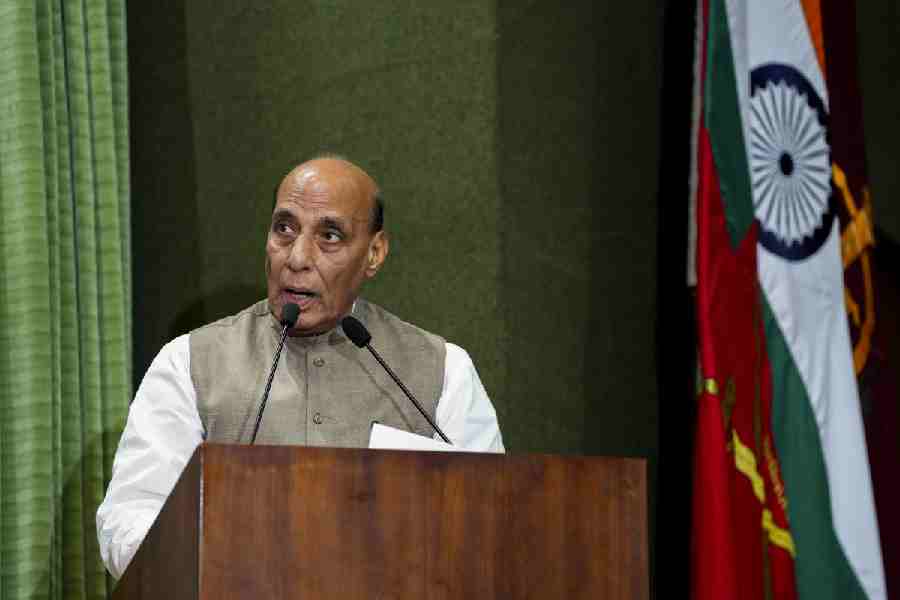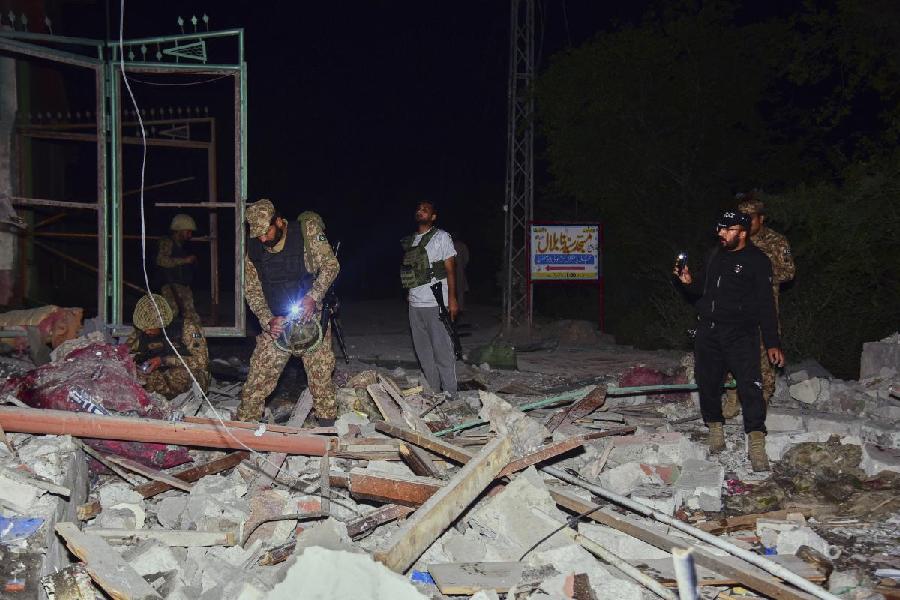 |
| Mamata Banerjee and power minister Manish Gupta at Writers’ on Tuesday |
Mamata Banerjee allowed Writers’ to empty out three hours earlier than usual on Tuesday so that employees could beat the transport chaos triggered by the power outage, but it was a nightmare without end for the city.
The only bright spot in the blackout was the relatively minimal impact of the unprecedented outage on the CESC-served areas, which also allowed Metro Railway to run uninterrupted.
When the power outage started at 1.01pm, demand in the areas served by the state-run power distribution company was around 4,400MW. Within seconds, supply dropped to zero, plunging 18 of the 19 districts into the longest simultaneous spell of power outage.
“Only once before, in 2001, had the state suffered a blackout of this scale. On that occasion, the other grids in the country were working, so we were able to source power from the other regions. On Tuesday, two other grids collapsed one after the other, leaving us with no alternative,” a senior official of the power department said.
CESC, which has over 26 lakh consumers in Calcutta, was not connected to the state grid at the time, which is why the impact of the collapse didn’t have an immediate effect. But the mismatch between demand and supply did trigger long spells of loadshedding in the CESC-served areas of the city.
Supply to all critical establishments in the CESC-served areas was restored by 3pm and elsewhere at 10.58pm. Supply to CESC-served areas “normalised” by 11.30pm, according to a senior company official.
“CESC generally stays isolated from the grid till it needs to import in excess of 800MW, which happens rarely. As it was off the grid on Tuesday when the outage occurred, the generation, transmission and distribution network remained unaffected for a while,” the official said.
The Sanjiv Goenka-led company resorted to phased power cuts only when it was unable to import power from the state-run distribution utility to meet the demand exceeding its generation capacity of 1,225MW.
For those dependent on the state-run utility, which has a consumer base of 1.01 crore, there was no respite although officials claimed they had restored supply in 30 per cent of the state by 10.30pm.
Demand for diesel to run generators in homes and housing complexes soared with the power outage continuing beyond a couple of hours. By evening, several pumps were turning away people queuing up to buy fuel for generators.
Calcutta’s transport and traffic system, vulnerable to everything from a flash strike to a burst of heavy rain, also collapsed under pressure once the suburban rail network came to a halt because of the power outage.
Such was the scramble for transport that people were seen perched on the roofs of buses headed towards the suburbs, a sight that may be common in the districts but not within the city.
Those who managed to board crowded buses didn’t reach home in normal time. Traffic went haywire with the signals not working and the cops on the road could do little to ease the snarls that delayed everyone.
“I left office at 3pm and waited for a bus that I could board for over two hours, only to get stuck in the traffic mayhem for at least another 30 minutes,” said Sima Dhar, a Sodepur resident who boarded a bus at Shyambazar after failing to get into one in Sealdah.
The snarls were the longest on AJC Bose Road, Diamond Harbour Road and VIP Road.
The transport department ran about 200 additional state buses from Howrah and Sealdah stations but that proved inadequate for the 16 lakh commuters who use local trains. “More buses were required to ferry stranded people to places like Serampore, Bandel, Chinsurah, Barasat and Barrackpore,” said an official.
Taxis and autorickshaws took advantage of commuters desperate to reach home, charging up to treble the normal fares.
Many from the suburbs preferred to spend the night in the homes of friends and relatives in the city rather than struggle for transport. Jadavpur University student Amrita Kar stayed back at a friend’s house in Salt Lake.
“My parents called to say that trains were not running. As there was no certainty about when services would resume, I decided to stay with my friend,” said Amrita, a resident of Mankundu in Hooghly district.
As people on the streets fumed, chief minister Mamata clarified that the state government wasn’t responsible for their plight in any way. “I have curtailed office hours for the day so that people can reach home early. Please don’t panic, go home without rushing…. I must tell you that our government is not responsible for this power outage,” she said.











